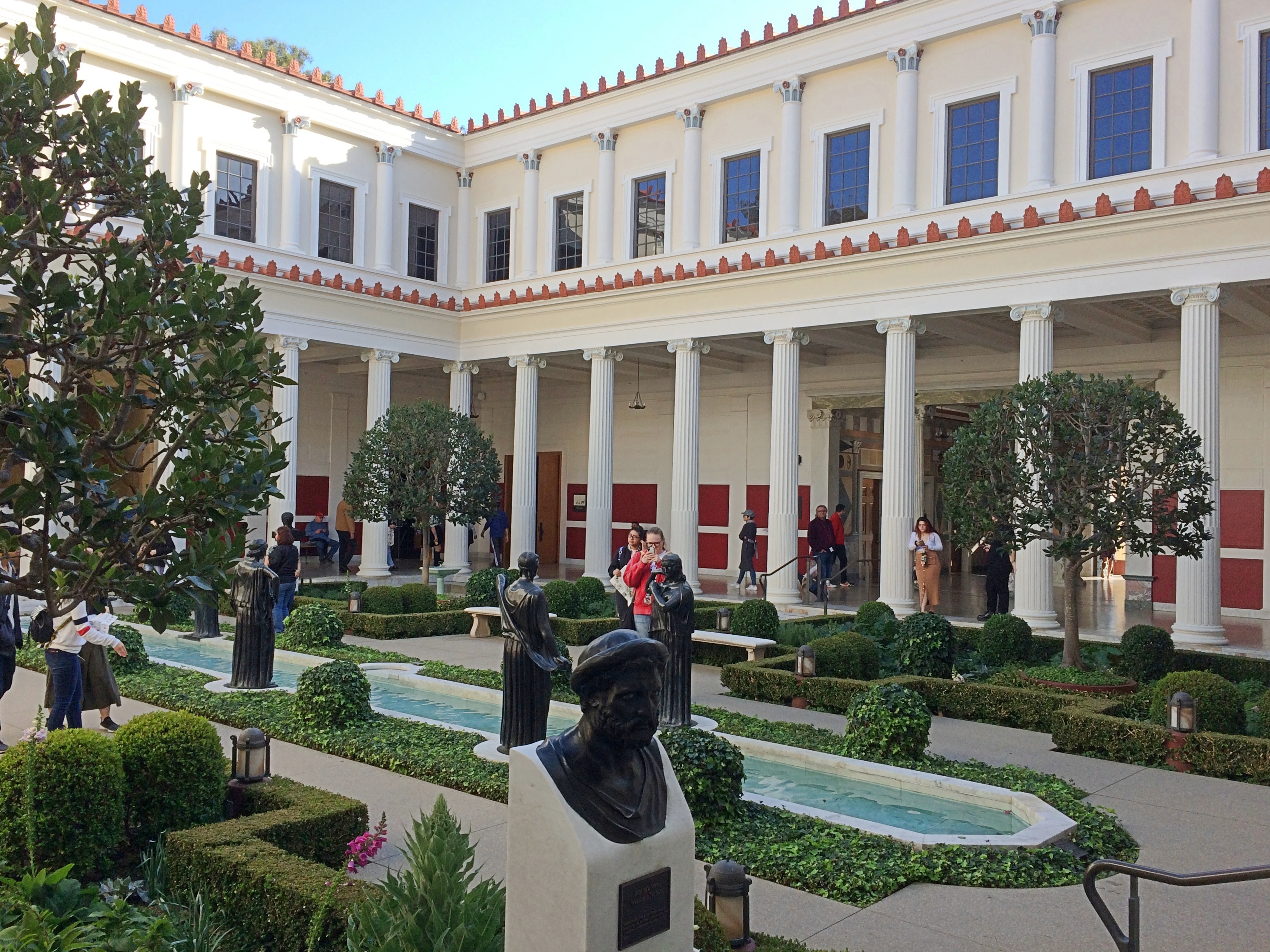I’m connected on Facebook with a man named Rolf Achilles. I took a noncredit class he taught on Chicago history at the Newberry Library in the late 1980s. I think he also attended the Harvest Dinner Party at my apartment on October 22, 1988, but I’m not sure — a lot of people were there. Not sure I’ve seen him since then, or whether he’d remember me if he saw me.
Rolf’s an art historian, and often publishes images of fine art on Facebook. Not long ago, he posted pictures of items on display at the Getty Villa in Pacific Palisades, California. I also happened to be planning my trip to California at the time. Almost at once I knew I wanted to see the place, along with the Getty Center. Thanks, Rolf.
When the time came, on the afternoon of February 23, I only had time for one of them. I decided on the Getty Villa. Of course I did. It offers a collection of ancient art.
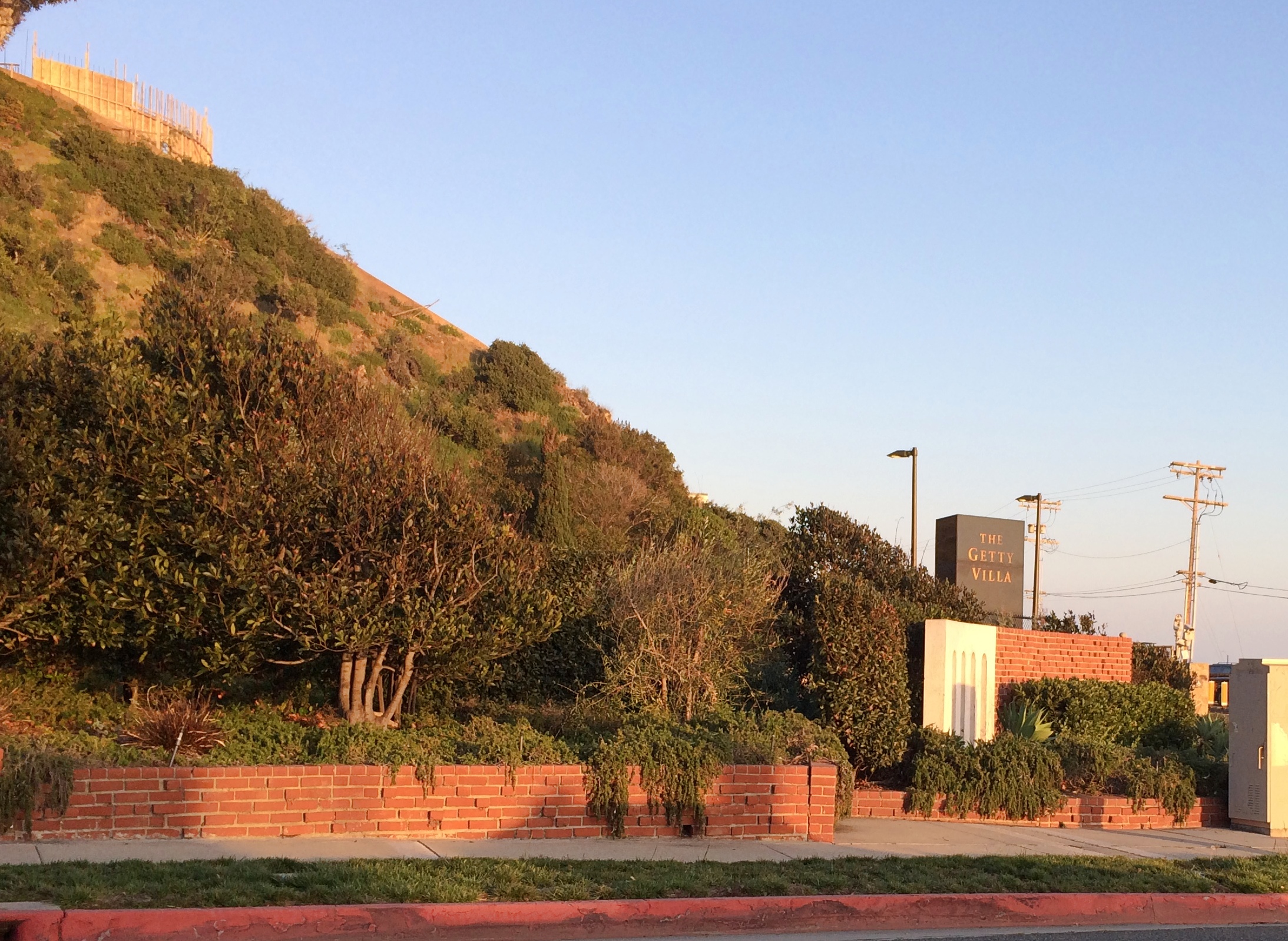 Oil billionaire and notorious tightwad J. Paul Getty had the property developed in the 1970s to house his large collection of ancient Greek, Roman and Etruscan art. Tight-fisted Getty might have been in many things, but not when it came to the sumptuous villa. The structure, on the hills overlooking the Pacific, is a re-creation of a specific villa in Herculaneum, the Villa of the Papyri, which wasn’t just any Roman country villa, but among the poshest known.
Oil billionaire and notorious tightwad J. Paul Getty had the property developed in the 1970s to house his large collection of ancient Greek, Roman and Etruscan art. Tight-fisted Getty might have been in many things, but not when it came to the sumptuous villa. The structure, on the hills overlooking the Pacific, is a re-creation of a specific villa in Herculaneum, the Villa of the Papyri, which wasn’t just any Roman country villa, but among the poshest known.
Apparently the old man died before the villa was completed, or at least he never went to see it. Too bad for him. The villa was opened to the public as a museum for a short time, but soon closed and wasn’t re-opened until 2006, after some additions to the grounds.
Langdon Wilson Architects did the original design. “Architects looked closely at the partial excavation of the Villa dei Papiri and at other ancient Roman houses in Pompeii, Herculaneum, and Stabiae to influence the design,” the Getty web site says. “The scale, appearance, and some of the materials of the Getty Villa are taken from the Villa dei Papiri, as is the floor plan, though it is a mirror of the original.”
In 2006, Machado Silvetti renovated the villa and added a nearby complex of buildings, such as a cafe, museum store and auditorium. These buildings set the pattern for your approach to the Getty Villa. After parking at some distance, you walk to a bank of elevators or flight of stairs that take you to a elevated path to the villa. Then you have to go back down (part of the way) to enter the villa — via a 500-seat outdoor amphitheater, which was also part of the addition.
In this shot, the amphitheater is to the left, the entrance to the right.
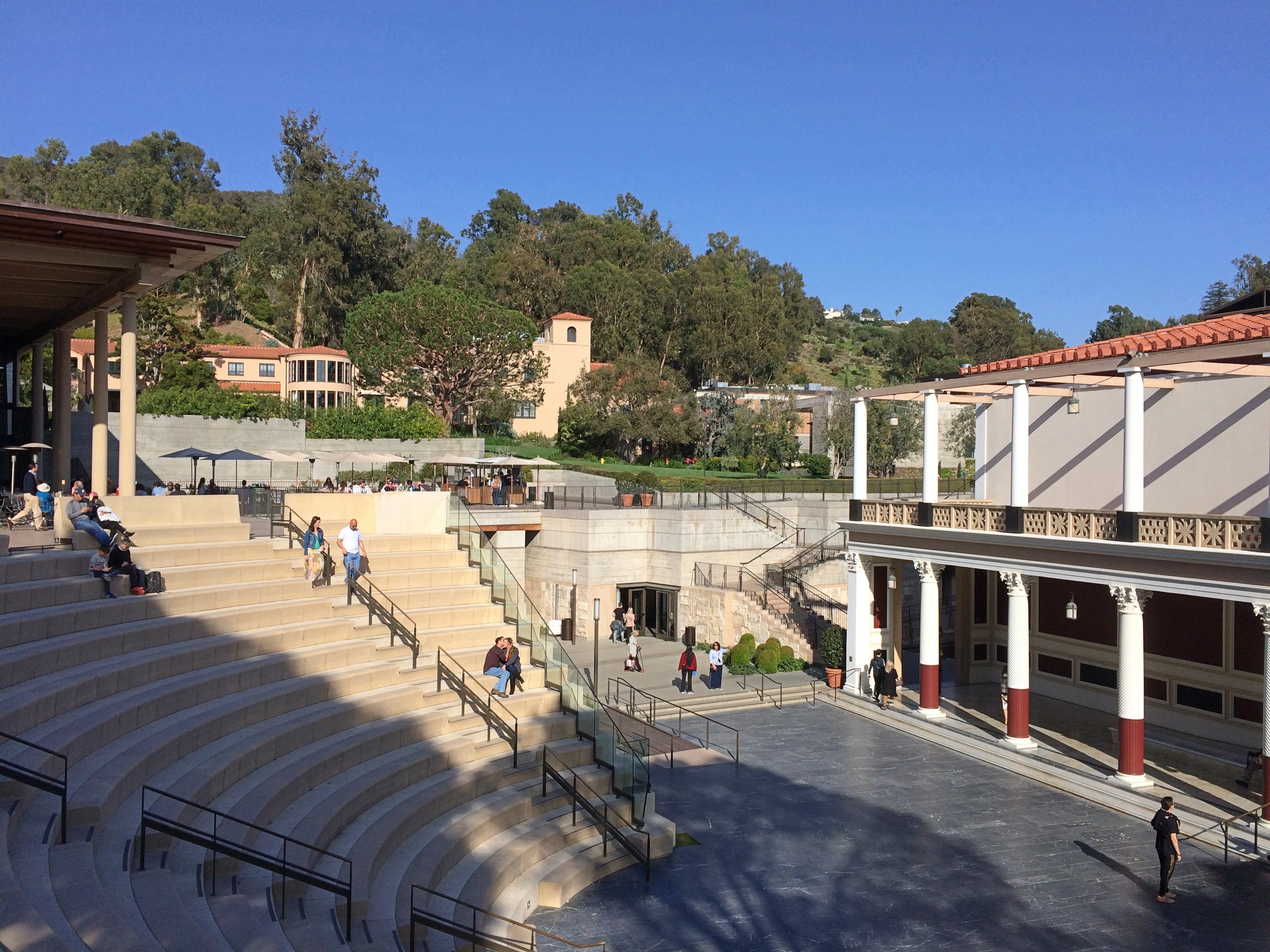 The entrance. I decided to go in and look at the building and grounds first, and then the works of art on display.
The entrance. I decided to go in and look at the building and grounds first, and then the works of art on display.
 The entrance leads to the Atrium, a splendid introduction to the structure that has rooms off each side, exhibiting art. Then the structure opens up into an open-air Inner Peristyle.
The entrance leads to the Atrium, a splendid introduction to the structure that has rooms off each side, exhibiting art. Then the structure opens up into an open-air Inner Peristyle.
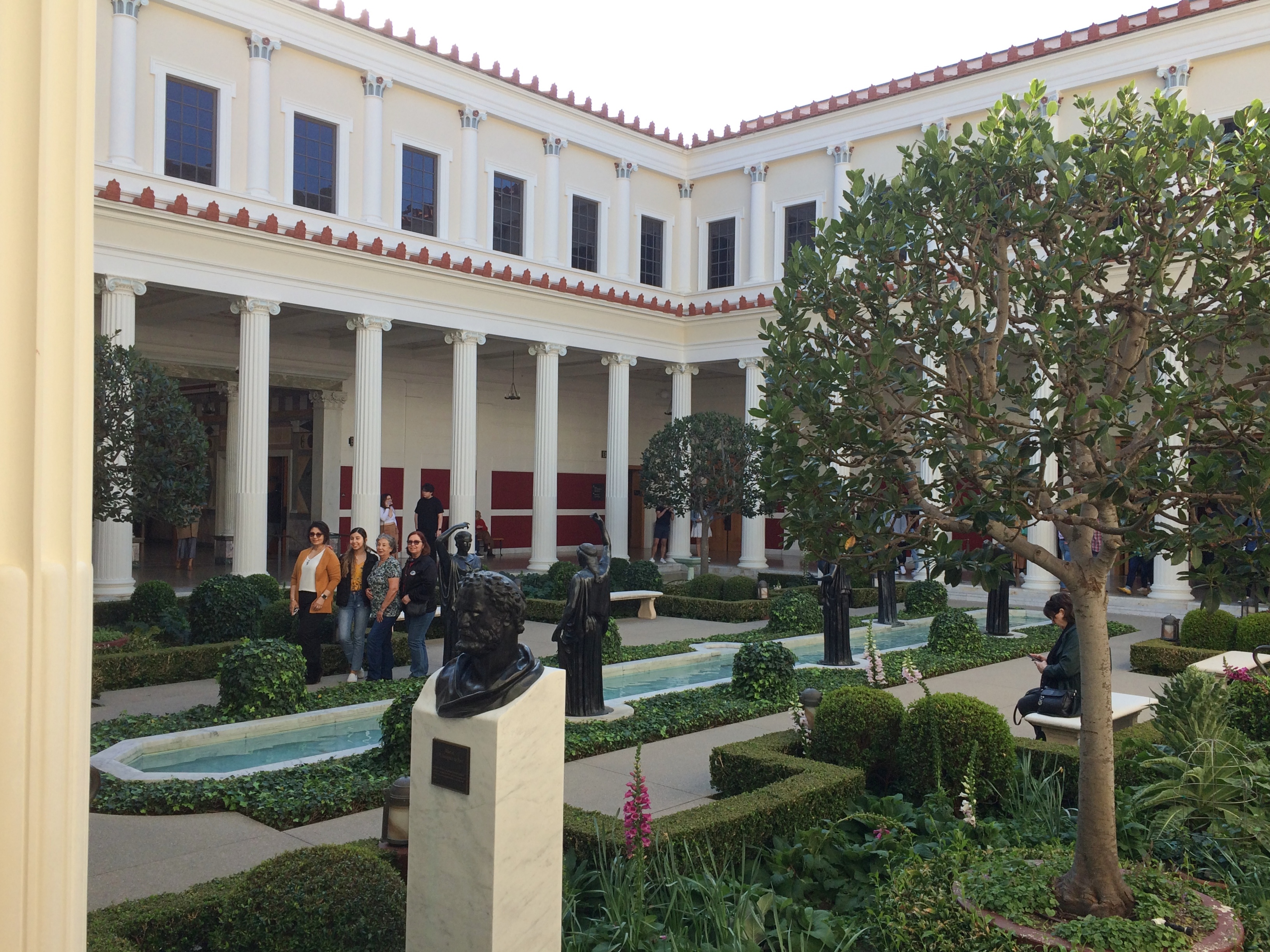
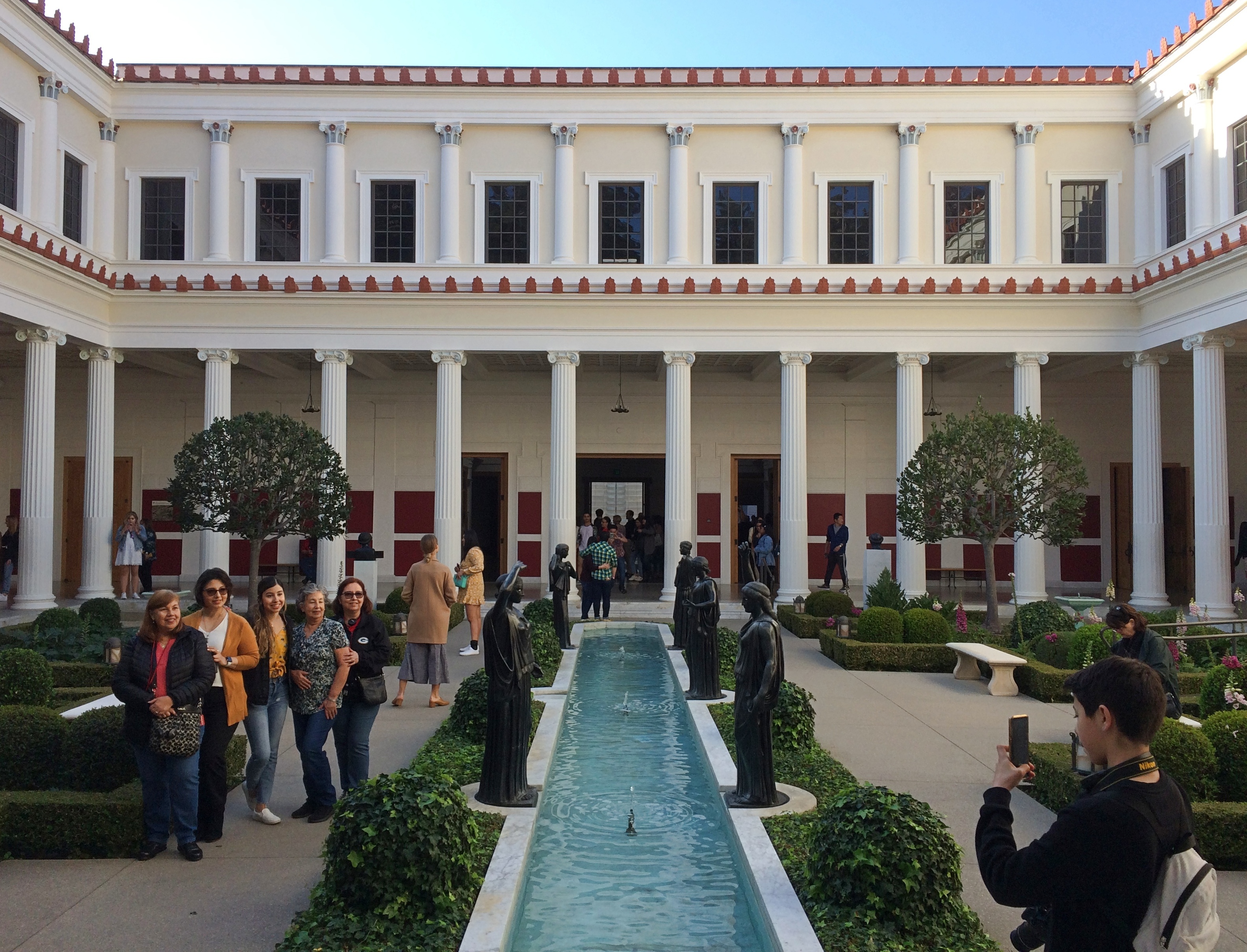 “This type of space was common in the second century B.C., when the main structure of the ancient villa was built,” signage in the peristyle says. “The Getty Villa’s garden is lushly planted with a variety of annuals and perennials bordered with hedges. The colonnade is paved the terrazzo, a mosaic flooring… A long, narrow pool emphasizes the east-west axis of the Getty Villa. Statues of young women, reproductions of ancient bronze sculptures found at the Villa dei Papiri, are set around the pool.”
“This type of space was common in the second century B.C., when the main structure of the ancient villa was built,” signage in the peristyle says. “The Getty Villa’s garden is lushly planted with a variety of annuals and perennials bordered with hedges. The colonnade is paved the terrazzo, a mosaic flooring… A long, narrow pool emphasizes the east-west axis of the Getty Villa. Statues of young women, reproductions of ancient bronze sculptures found at the Villa dei Papiri, are set around the pool.”
Exit the Inner Peristyle and you’re on a small balcony overlooking to Outer Peristyle. I stood there for a while, just gawking. It’s a gawk-worthy place.
 The top level of awe at the property, as far as I was concerned. The Atrium had been bronze and the Inner Peristyle had been silver. Now I was at the gold level.
The top level of awe at the property, as far as I was concerned. The Atrium had been bronze and the Inner Peristyle had been silver. Now I was at the gold level.
Walk out into the Outer Peristyle and all the way to the far end, and you get a view of the Inner Peristyle that you came from.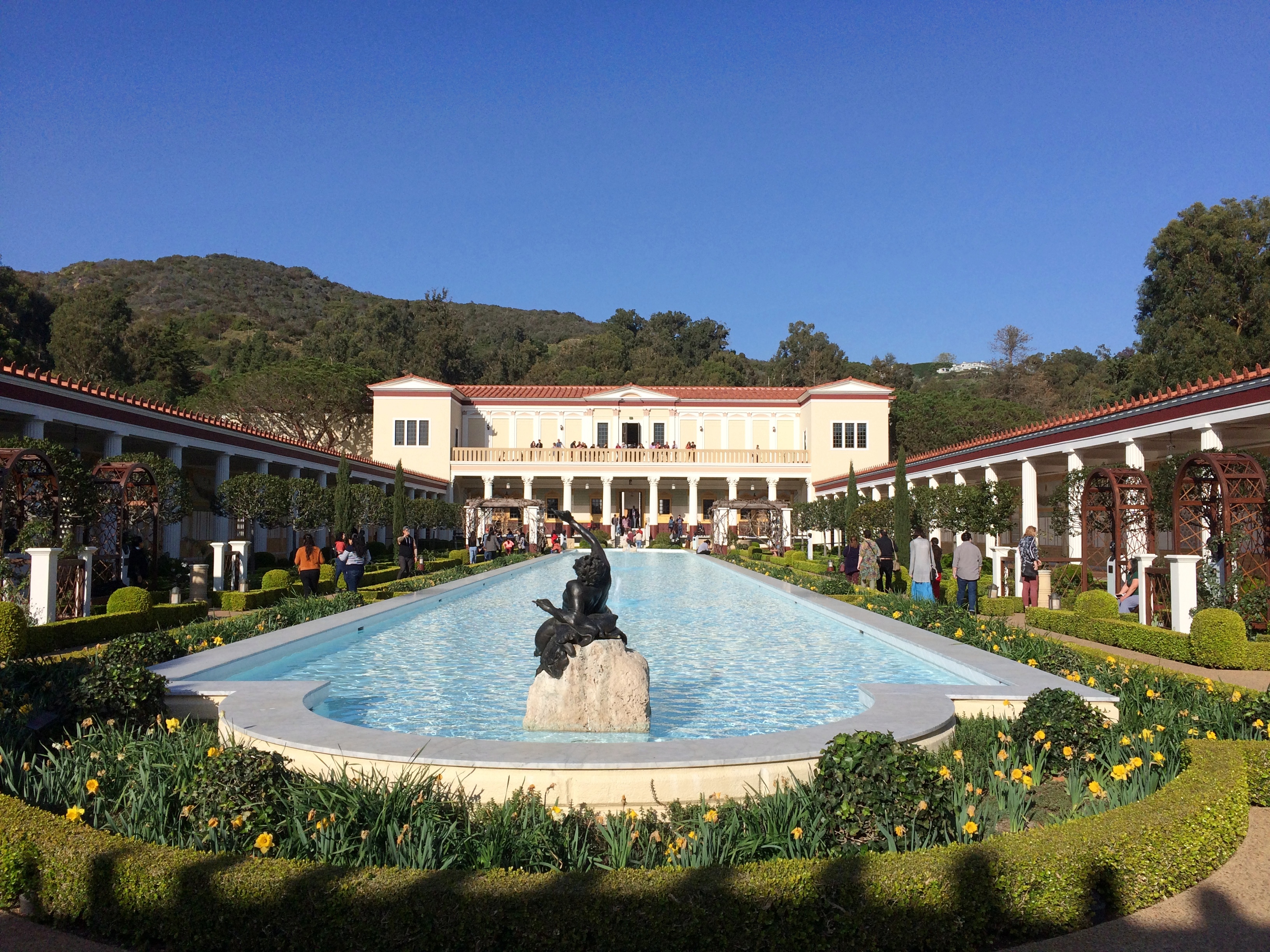
 I quote at length a press release from the time the Getty Villa reopened in the mid-2000s that’s remarkably informative: “Designed by Denis L. Kurutz Associates, and implemented by kornrandolph, inc., the Getty Villa landscape takes into account the lush topography of the Malibu canyon.
I quote at length a press release from the time the Getty Villa reopened in the mid-2000s that’s remarkably informative: “Designed by Denis L. Kurutz Associates, and implemented by kornrandolph, inc., the Getty Villa landscape takes into account the lush topography of the Malibu canyon.
“In addition to the historically accurate species found in the four gardens and in areas closest to the J. Paul Getty Museum building, the landscape design also features a mix of Mediterranean and native California varieties, local plants of the Santa Monica mountains, and plants from other parts of the world that grow in climates similar to that of Southern California.
“[The Outer Peristyle] is the Villa’s main garden, the largest and grandest of the four. Bronze sculpture and replicas of statues discovered at the remains of the first-century Villa dei Papiri have been placed in their ancient findspots…
“Just like its smaller neighbor, the Outer Peristyle is dominated by a large pool running down the center. Trimmed ivy topiaries frame the edges of the pool, which is crowned at its north end with two sculptural pomegranate trees and enclosed by 24 Grecian laurels on either side, mirroring the structural columns of the building.
“Four benches are available — two located in arbors draped in grape vines, and two nestled in pockets surrounded by hand-crafted wood trellises. Clusters of rose gardens are filled with ancient gallica, damask, and musk roses, while much of the ground is covered with a layer of sweet violet. Flowering perennials such as chamomile, daisy, rosemary, and sage are planted in abundance for variety and color, along with tulips, iris, Madonna lily, cyclamen, and narcissus.”
I understand that the Getty Villa isn’t an exact replica of the original in Herculaneum. For one thing, the Villa dei Papiri hasn’t been fully excavated. Also, buildings in our time need to be up to modern fire codes and so on. Still, as a re-creation of ancient Rome, this is likely to be the best I’ll ever see.
It’s also an excellent setting for the art collection. I’ve read that the once upon a time, Getty had some issues with stolen artwork. Or at least disputed provenance. Back around the time the villa re-opened, a number of objects were sent back to Italy and Greece. Hope that’s all behind the museum. What remains is amazing enough.
Might as well start with the museum’s star piece of art. Its Mona Lisa, you might say: the Lansdowne Hercules, Roman, ca. AD 125. (As the museum styles it — not CE.)
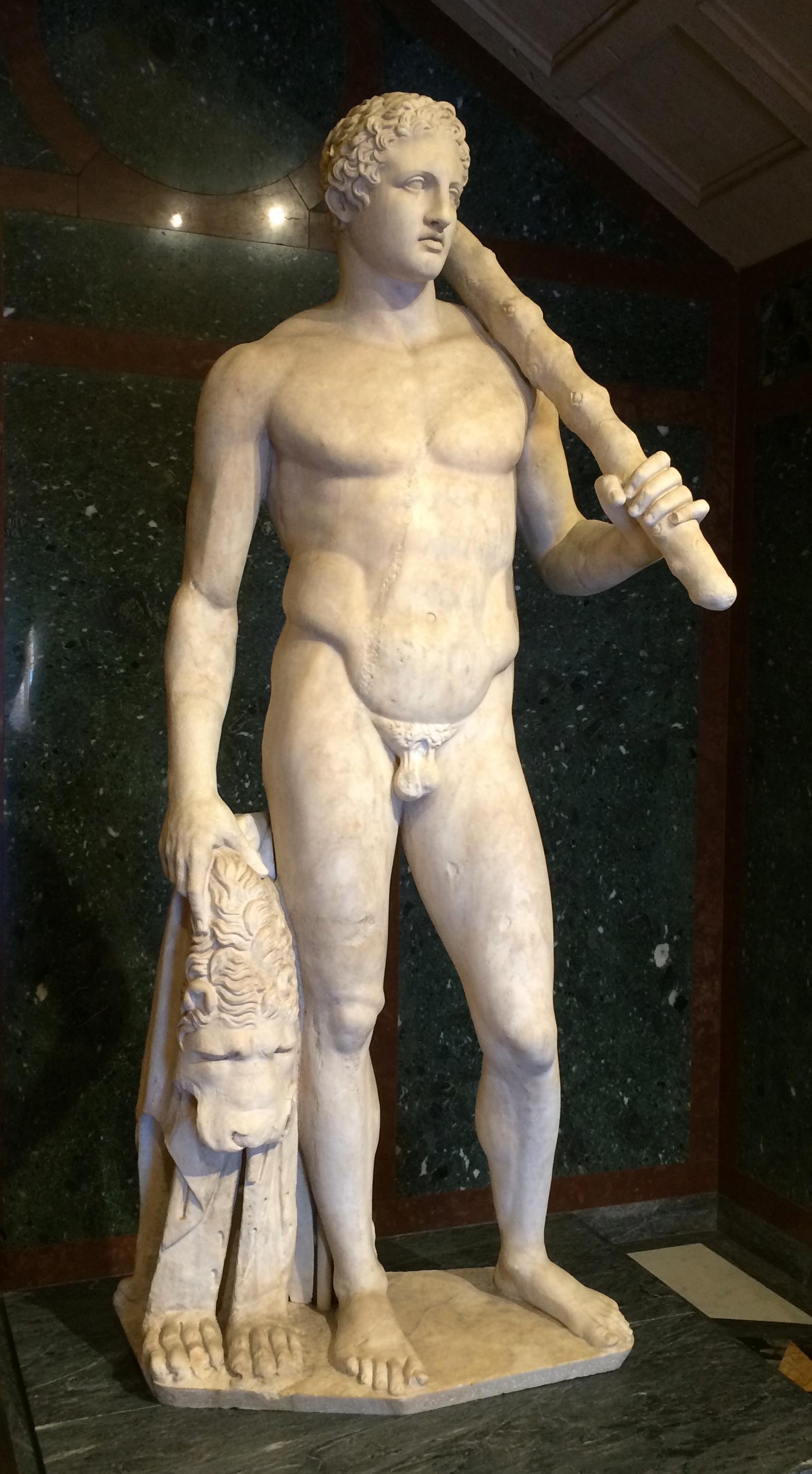 Found near Hadrian’s villa at Tivoli, so maybe the emperor himself saw it. In our time, the statue has its own room in the Getty Villa.
Found near Hadrian’s villa at Tivoli, so maybe the emperor himself saw it. In our time, the statue has its own room in the Getty Villa.
Other Roman statues include Leda and the Swan, AD 1st century.
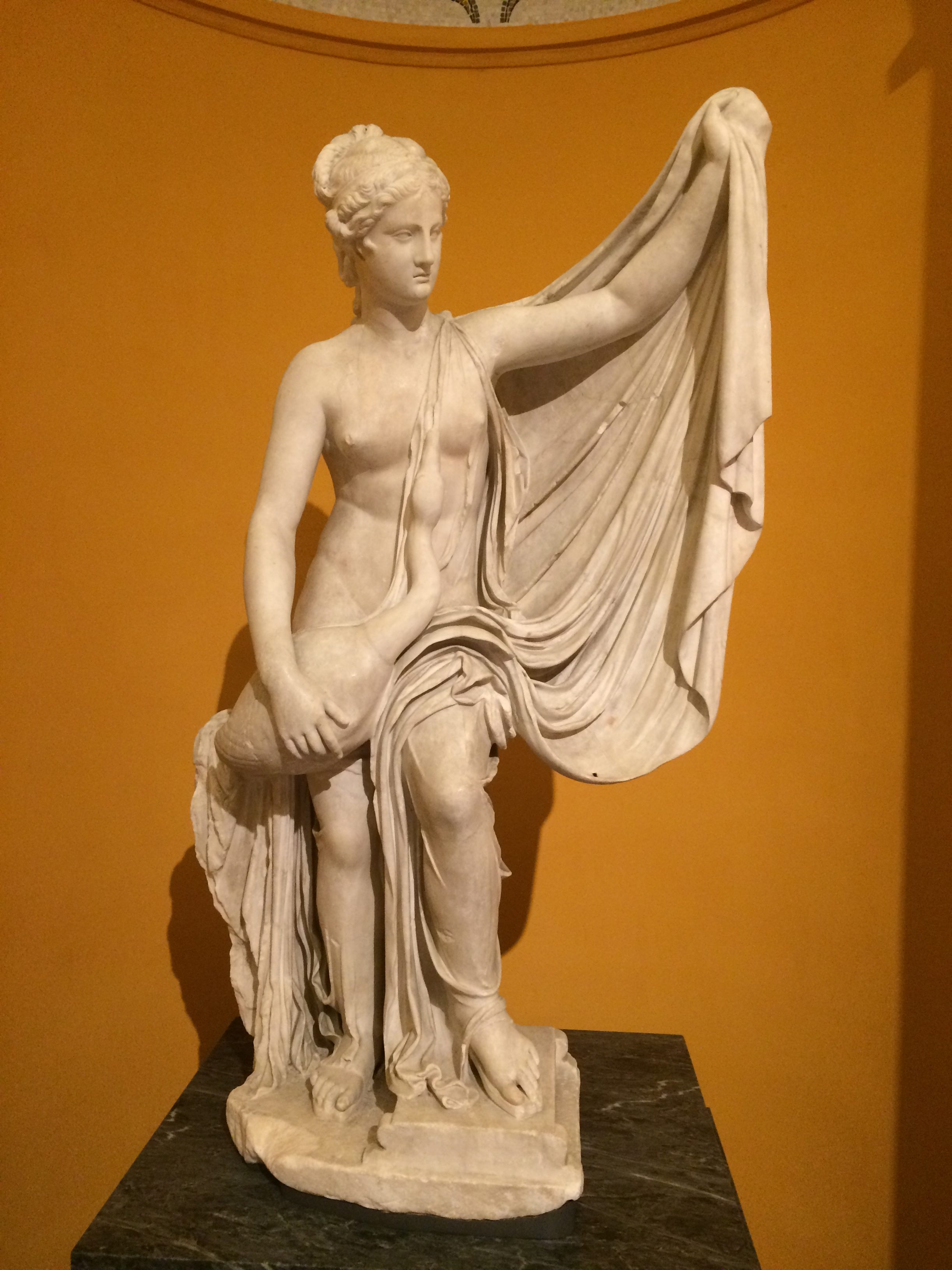 Venus, Roman, AD 2nd century.
Venus, Roman, AD 2nd century.

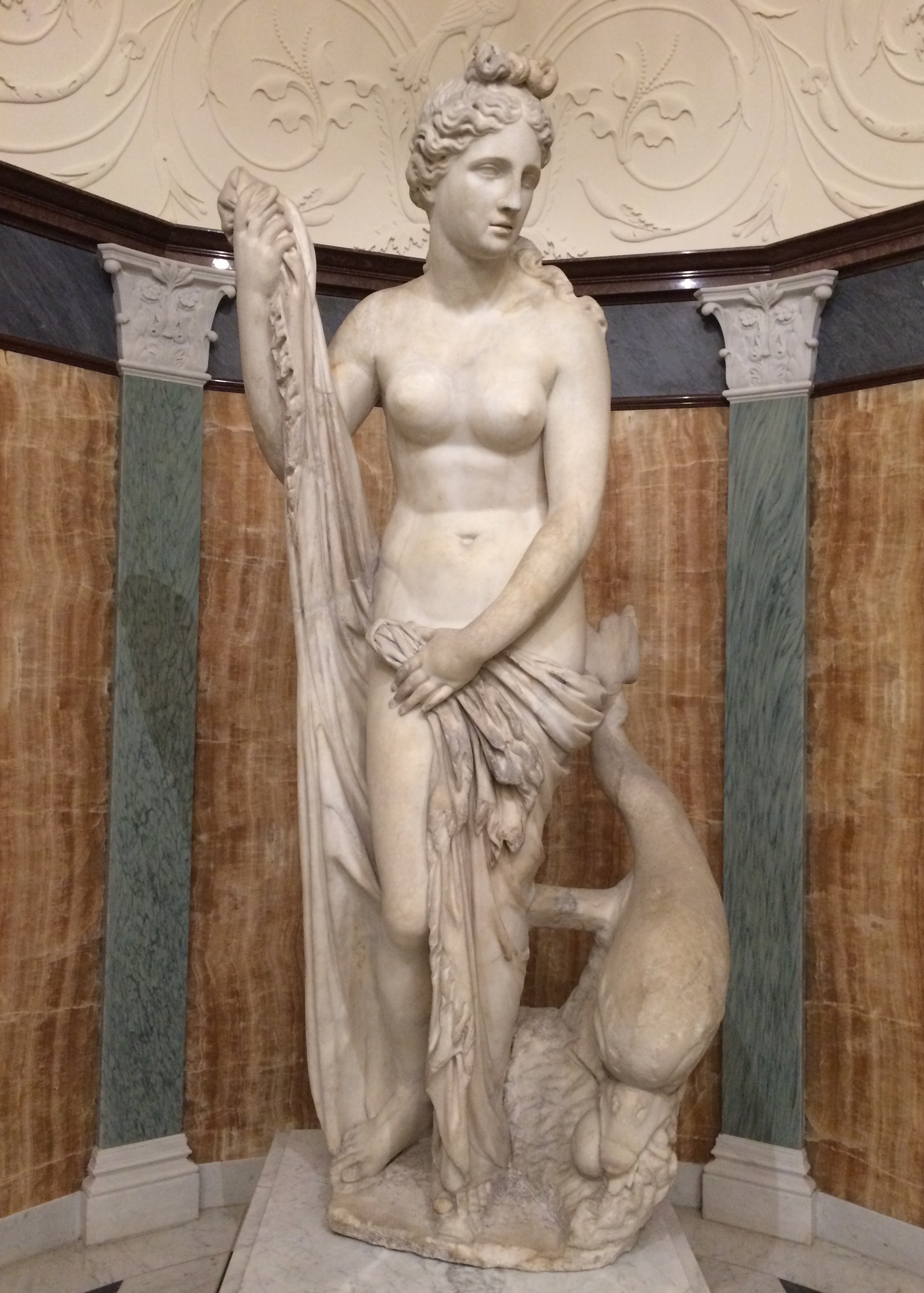 Crouching Venus, Roman, AD 100-150
Crouching Venus, Roman, AD 100-150
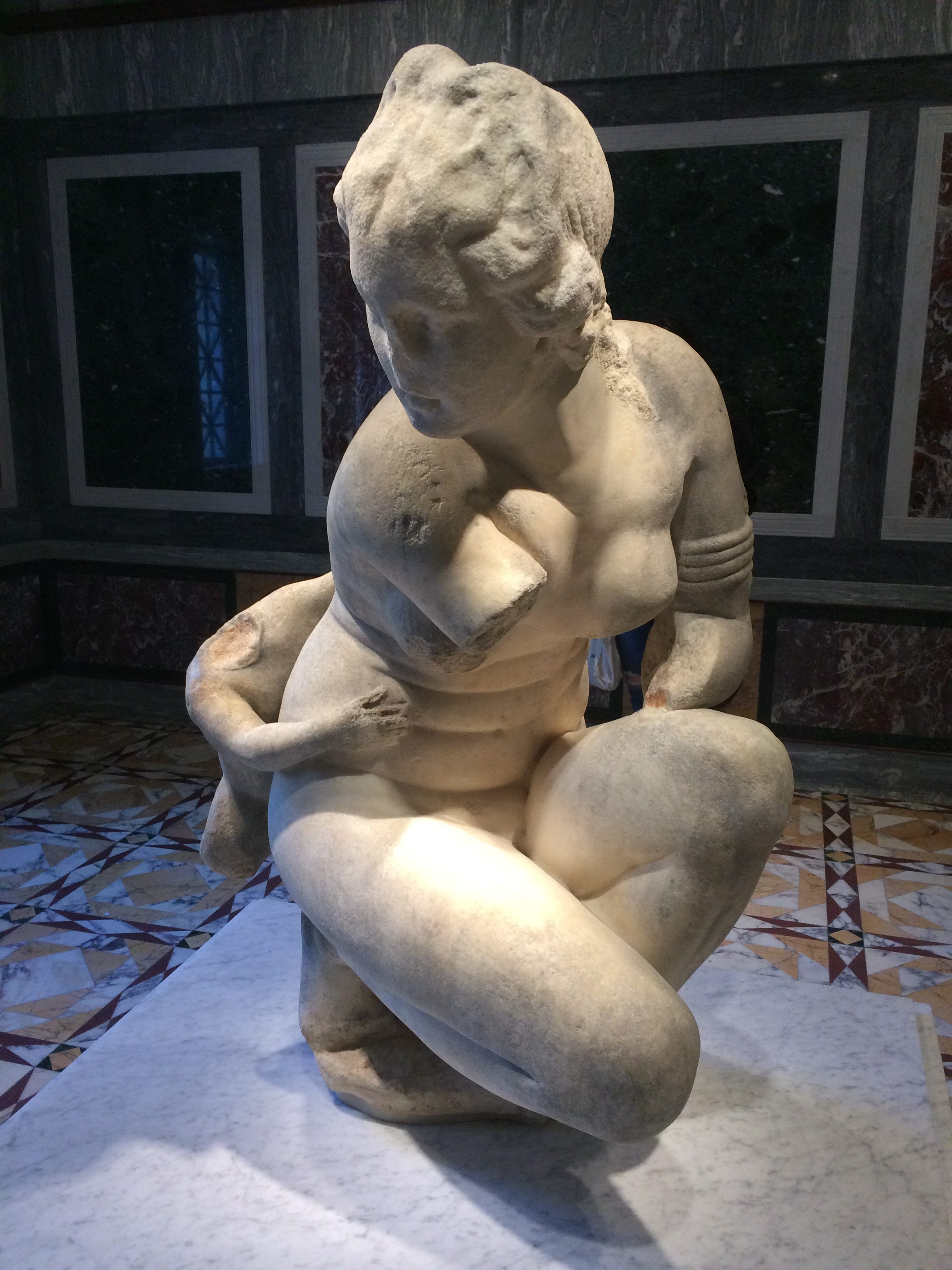 Jupiter, Roman, 1st century BC
Jupiter, Roman, 1st century BC
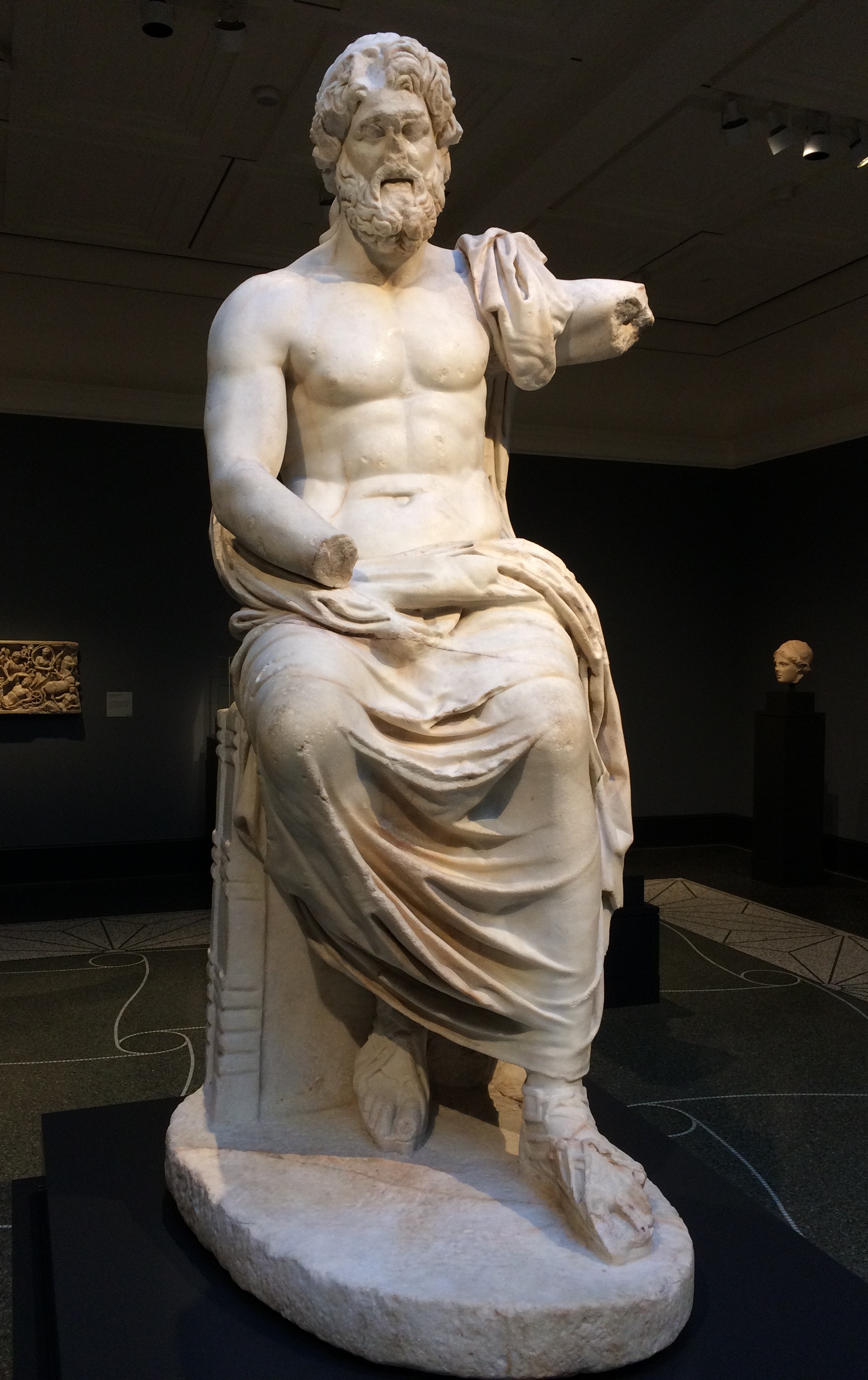 Plus busts. A number of emperors. Such as Augustus.
Plus busts. A number of emperors. Such as Augustus.
 Tiberius.
Tiberius.
 Caligula.
Caligula.
 All very good, but I’ll never shake the feeling that those emperors looked like Brian Blessed, George Baker and John Hurt, respectively.
All very good, but I’ll never shake the feeling that those emperors looked like Brian Blessed, George Baker and John Hurt, respectively.
The Greek galleries excelled in pottery. All the pictured objects are Athenian, 6th or 5th century BC. Such as Storage Jar with Diomedes Slaying Rhesos.
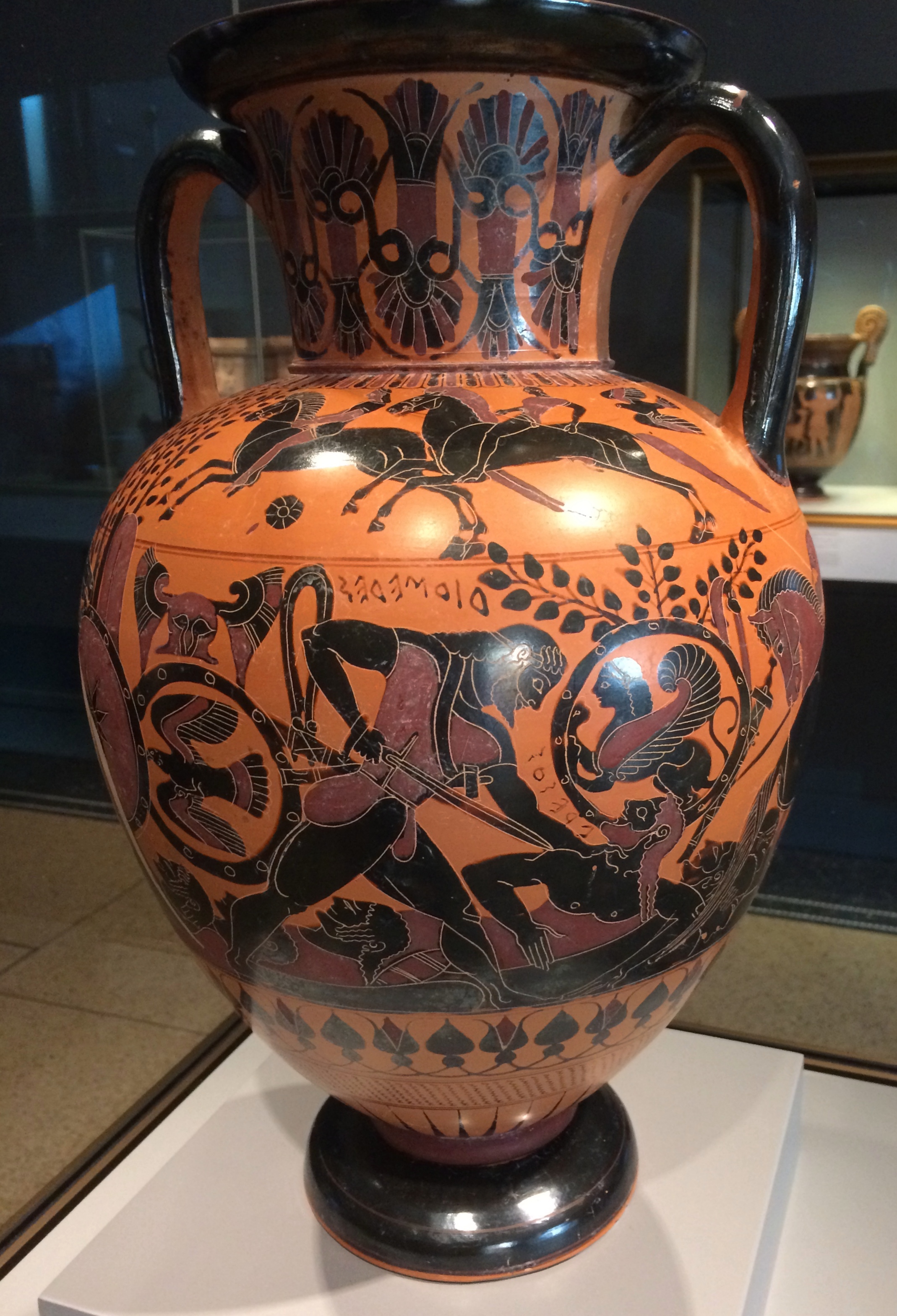 Mixing Vessel with Adonis and Goddesses.
Mixing Vessel with Adonis and Goddesses.
 Prize Vessel with a Chariot Race
Prize Vessel with a Chariot Race
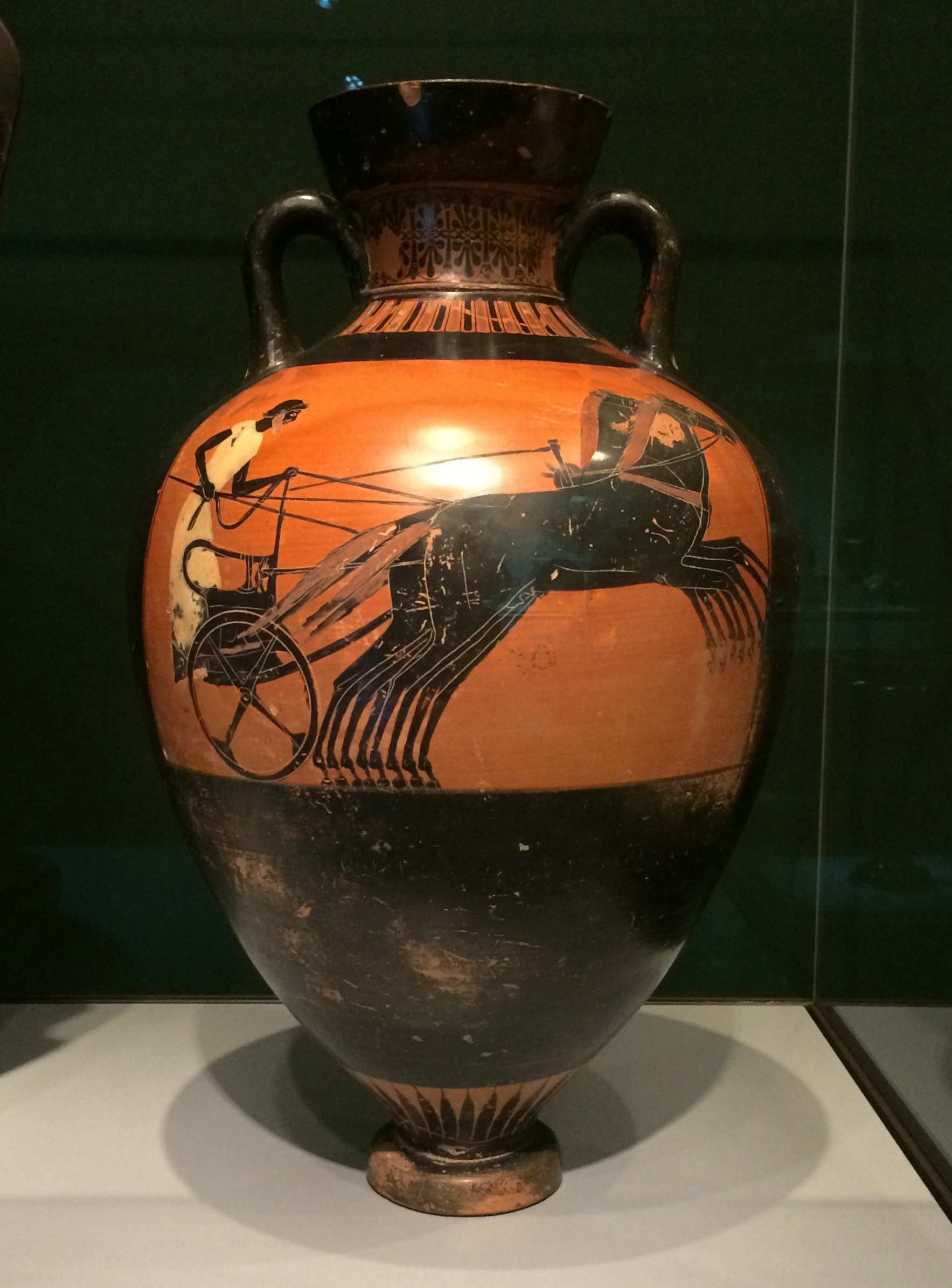 All in all, the ancient art collection is in the same league as those at the British Museum and the Pergamon Museum, in my amateur opinion, though I’ve barely scratched the surface of the many collections around the world.
All in all, the ancient art collection is in the same league as those at the British Museum and the Pergamon Museum, in my amateur opinion, though I’ve barely scratched the surface of the many collections around the world.
